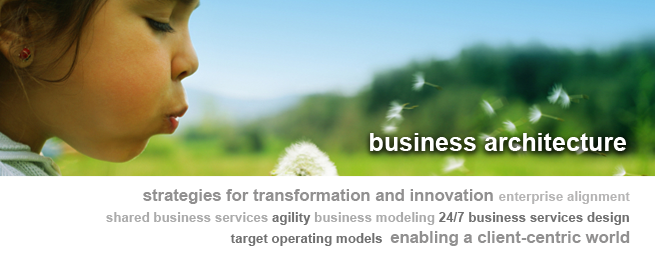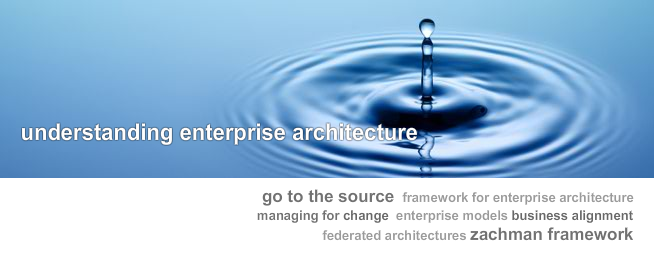hi
Intervista – Canada
http://www.intervista-institute.com/educational.php
Business Architecture outline course![]()

Day 1 | Day 2 & 3 | Course Fees | PDF Version | ShareThis
![]()
Day 1 – Strategy, Innovation and Business Architecture
1. The innovation imperative.
Challenges of business agility.
- Agility and innovation – what do they really mean?
- Client and citizen-centric pressures
- Regulatory and compliance requirements
- What is your innovation culture?
- Opportunities for new business models - The role of strategy for Business Architecture (BA)
- Enabling services, products and program innovation with BA
- BA as catalyst for change: Trailing strategy, values & technology trends
- The constraints to agility - Managing accidental and essential complexity
Aligning strategy, design and projects.
- Defining Enterprise Architecture and Business Architecture
- Business Architecture mission, deliverables, and target groups
- The Business Architecture ecosphere:
- Enterprise, information, cloud services, technology, security and policy architectures - BA’s critical contributions to EA
- EA and BA: Closing the strategy, design & implementation divide
3. Real World Business Architecture.
Drives and imperatives for business architecture.
- Transformation and innovation management
- Organizational design
- Portfolio management and rationalization
- Performance management and cost reduction
- Mergers, reorganizations and large-scale integration
4. Identifying a Strategic Roadmap.
Getting started: Analysis of business.
- Needs, goals, outcomes, outputs, and values
- Enterprise-level business architecture analysis: Identifying strategic drivers
- Value proposition and value chain analysis
- Service concept and service value chain
- Logic models and strategy maps
- Validating business goals
5. From strategy to Business Architecture.
Bridging the gap.
In this interactive workshop, team members use a real world case study to understand the strategy of
introducing a direct self-service channel.
- Using Business Architecture for transformation
- Analyzing strategic direction and stakeholder needs
- Value chain and program analysis
- Impact of strategic changes on people, process and technology
Days 2 & 3 Implementing Business Architecture for the Client-Centric Enterprise
1. Fundamentals of enterprise models.
Managing change.
- How architectures, frameworks and models tame complexity
- Mapping the future:
- As-is vs. To-be Business Architectures - Overview of BA approaches
- The Business Architect as chameleon:
- Representing strategic, organizational and IT perspectives
2. Business services design.
Modeling for a client-centric world.
- Alignment of strategy and outcomes
- Meeting market or constituency needs
- Using service patterns
- Modeling valued outputs of the enterprise
- Aligning the outputs with intended outcomes
Designing target operating models.
- The extended enterprise
- Modeling value chains and core processes
- Assessing & modeling the impact of strategy on the current value chain
- Abstracting common/shared services from the current operating models
- Organizational implications for realizing target operating models:
- Designing vertical and horizontal accountabilities
- Managing outsourcing
- Building in trust: Security and privacy

Creating a shared understanding.
- The conceptual business model and its role
- Modeling for the bilingual Business Architect
- Business and technical language competencies - Understanding the structural view
- Business components and their relationships
- Input to the enterprise information model
The times they are a changing.
- Understanding the behavioral view
- The state transition model:
- Modeling behavior over time - Combining semantic and state transition models
6. Modeling business processes.
Living in a world of distributed and virtual services.
- The critical role of Business Architecture in distributed services
- Understanding the functional view
- Businessand distributed use cases
- Implications for cloud applications and service-oriented architecture (SOA)
- Process and integration standards
7. Capturing policy and business rules.
Gaining enterprise agility.
- Environmental implications on strategy
- Impact of strategy changes on business & policy
- Externalizing policies and business rules
- Transparency of business processes
- Modeling business rules
- Business scenarios
8. From over-the-counter to 24/7.
A world of disintermediation.
- The challenge of conducting business anytime, anywhere with anyone
- Business network model:
- Implications for the technology architecture - Workflow architecture
- Design/simulation of enterprise-wide workflows and business processes
9. Patterns in the business environment.
The power of reference models.
- The role of reference models
- From abstraction to generalization
- Government reference models
- Industry sector reference models
- Real world look at municipal reference models
10. Managing the transformation portfolio.
The reality of priorities.
- Roadmap to BA deliverables
- Coverage and granularity factors:
- Business analysis, project and portfolio management - Building the right skill set: From BA to IT to change management
- The build-out: From projects to strategic portfolio management
11. Building the business blueprint.
Achieving the adaptive enterprise.
- Business modeling tools: Managing business design knowledge
- The reality of strategy dynamics:
- Ongoing adaptation in a client-centric world
- Sensitivity of Business Architecture artifacts and models to change - Managing the portfolio of business artifacts
- Business Architecture governance
Enterprise Architecture Course

Course Outline | Course Fees | PDF Version | ShareThis
![]()
2 Day Course - Understanding Enterprise Architecture
Framework Fundamentals
1. The innovation imperative.
Business drivers for Enterprise Architecture.
- The waves of change
- The revolution in concepts
Framework for Enterprise Architecture.
- Enterprise knowledge artifacts:
- From data, function and networks
- From scope to enterprise, systems and technology models - The extended framework:
- From people, time and motivation
- From workflow, process and business rule models - Rules of the Framework
3. Addressing the paradoxical challenge.
Rapid delivery & enterprise infrastructure.
- The "model" vs the "results" view of the world
- Process concepts
- What about objects?
- Paradigms for managing change: architecture and assemble-to-order to manage
rapid delivery
4. Behind the scenes.
EA implementation essentials.
- Model selection
- Skills, approaches and tools
- Short term demand strategies
- Managing federated architectures
5. For good measure.
The role of EA standards in successful implementation.
- Framework standards
- Adapting the standards to your organization
- Elaborating the models to your business
6. Planning the work.
Enterprise Architecture methodologies.
- Classification vs methodologies
- Methodology standards
- Methodology vendors
- Framework implementers
- Methodologies overview
7. Working the plan.
Enterprise Architecture practicalities.
- Funding and cost justification
- Return on Investment (ROI)
- Repositories and model management
- Organization & culture change
- Towards the new business imperative: Build, Store, Manage and Change the Models
;;_))

No hay comentarios:
Publicar un comentario